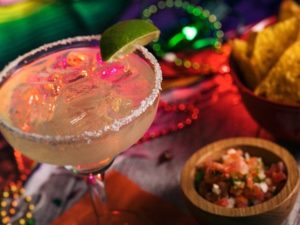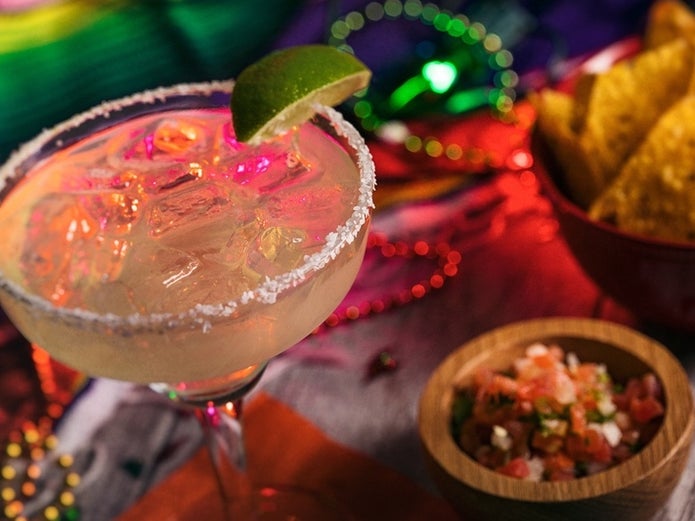 What do non-Hispanics get wrong about Cinco de Mayo? The list is long, varied and frankly, embarrassing.
What do non-Hispanics get wrong about Cinco de Mayo? The list is long, varied and frankly, embarrassing.
DALLAS — Remain calm. Nothing bad will happen to you if you just observe Cinco de Mayo at home in Texas.
Your Latino friends are used to you misunderstanding the Mexican Army’s victory over French invaders in 1862 to be Mexican Independence Day. It’s not. You’re thinking of Dieciseis de Septiembre, which actually occurred in 1810.
Likewise, they will probably be forgiving if you offer them a bottle of mezcal or tequila (especially one that’s been habanero or chipotle infused) in celebration. Piñatas, sombreros and other bits of culture that are more cosmetic and anglicized will likely just make your Hispanic friends roll their eyes.
No, friends, the trouble really comes when, Heaven forbid, you find yourself out of state. In Seattle, one “Mexican” eatery advertises its Cinco de Mayo festivities with posters yelling “Aye Aye Aye!” Well, anyone who’s spent an hour in a Texas Spanish class knows that the expression is “Ai Ai Ai,” so unless you’re calling in the Mexican fleet, the former is just an admission you no idea what you’re doing.
Also be aware that in New Orleans, Cinco de Mayo means that everything — from your crawfish tacos to your oddly buttery enchiladas — come with a distinctive Creole or Cajun twist. And, like most places outside the Southwest, they cannot make a margarita to save their well-intentioned souls. Margaritas are tart with lime. They are not sweet. They are not sour. Thank you.
1. The actual drink most associated with Cinco de Mayo isn’t a tequila drink at all. Puebla, which is Ground Zero of Cinco de Mayo (since it was the city successfully defended by Texas native General Ignacio Zaragoza back in 1862), prefers to serve agua fresca —water flavored with seeds,fruits and flowers. Among the most popular flavors: lime, tamarind and hibiscus.
2. Tacos? Not so much. You can’t go wrong with tamales, enchiladas or tacos (especially since the latter is a finger food that lends itself to wandering party to mix and mingle), but the locals of Pueblo would like you to know that there’s more to them than turning back the French army and their assortment of astonishing cathedrals from the 16th and 17th century.
3. There’s a reason Pueblo is known internationally as the gastronomic center of Mexico, and for many, it can be reduced to two words: Molé Poblano.
There are instructional videos on the net that can show you what goes into a great molé. Some include close to 80 ingredients. If that’s too much to wrap your mind around, consider that the principle flavors involve a complex combination of cocoa (some say chocolate), nuts and chiles. It is savory. It is thick, and it is utterly unique.
There are people who do not like it. You do not want to know them.
4. Another local favorite in Pueblo is a dish known as Chicken Tinga, and anyone who’s ever tried Indian traditional cooking recognizes that Tinga is to Latinos what a Tikka Masala is to the Indians. It too has a flavor profile so deep you’ll wonder how it can all sit on something as shallow as a plate. It’s slow cooked chicken in a tomato base, and seasoned with garlic, onion, and chipotle peppers in an adobo sauce. Like molé, it is an unforgettable sensation crossing the palate.
5. Oh, and a word about Herb Alpert and his beloved Tijuana Brass: Yes, they had more Mexican-inspired hits (and instrumental ones at that) than any group before or since. They’re great. Herb Alpert, as he has always been happy for the world to know, is of Russian-Jewish heritage.
Those tunes might have a Seattle crowd yelling “Aye Aye Aye!”, but Texans require something a bit more authentic. Why not check out San Antonio native “Flaco” Jiménez known for his wizardry with Norteño and Tejano styles? You’ll feel more Texan, more Tejano, and more a citizen of the world all at the same time.
One final note: Sombreros, especially if you’re not actually Hispanic, belong in only one place on Cinco de Mayo — storage.
Source: https://patch.com/texas/dallas-ftworth/cinco-de-mayo-gringo-guide-includes-5-essentials

